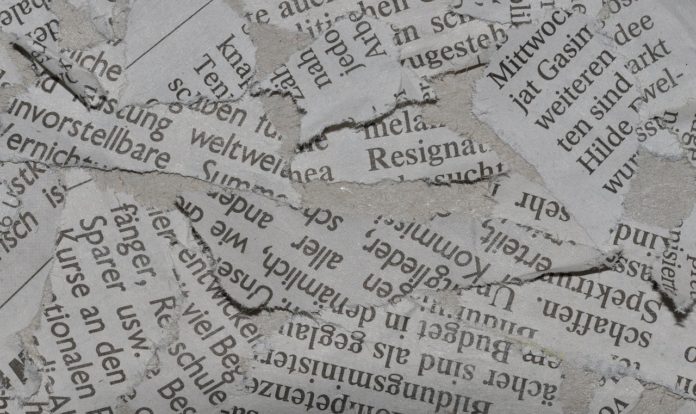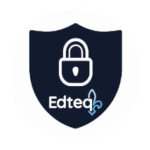L’un des piliers de la démocratie est l’accès à une information de qualité, qui permet d’exercer son rôle de citoyen de façon juste et éclairée. Avec le développement des médias en ligne et des réseaux sociaux, être citoyen en 2021, c’est nécessairement exercer ce rôle en tenant compte du numérique, qu’on en soit un usager ou non.
Déjà, en 2018, 90% des jeunes de 18 à 34 ans s’informaient presque exclusivement en ligne. Imaginez vos enfants et adolescents! Pour eux, les médias traditionnels n’existent pratiquement pas. Sachant cela, il est important de se préoccuper de l’information qu’ils vont chercher en ligne.
Pourquoi? Parce que le phénomène de diffusion de fausses nouvelles n’a cessé de prendre de l’ampleur au cours des dernières années, ce qui « ébranle la confiance qu’on accorde aux institutions politiques, aux médias et aux scientifiques, et déstabilise nos démocraties ». Et que nous sommes tous à un clic de partager une fausse information.
L’organisme Civix, qui fait de l’éducation à la citoyenneté à travers le Canada, est catégorique : « La diffusion de fausses nouvelles est sans doute l’un des problèmes les plus pressants des démocraties aujourd’hui. La capacité de départager le vrai du faux est devenue une compétence essentielle de tout citoyen en cette ère numérique. »
Comme parents, comment pouvez-vous amener votre enfant à mieux s’informer?
Les trois compétences clés à développer sont les suivantes : (1) vérifier la source, (2) vérifier l’affirmation et (3) retracer l’information à la source.
La démarche que nous vous proposons ici est inspirée de celle élaborée par l’équipe du site web Citnum.ca.
1- Vérifier la source
- Se questionner sur l’auteur de la publication (Qui est-il?, Est-ce un média reconnu?, etc.)
- Lorsqu’il y a une image, faire une recherche inversée par image (Google, Tineye)
2- Vérifier l’affirmation
- Comparer l’information avec d’autres reportages sur le même sujet : angle de traitement, choix des intervenants, façon dont l’information est présentée.
- Prendre garde aux biais cognitifs (ou quand votre cerveau sélectionne ou transforme l’information pour vous donner raison!)
- Exemples:
- Biais de confirmation: « Cette photo valide ce que je croyais déjà… ça doit être vrai. »
- Effet de vérité illusoire: « J’ai tellement vu souvent cette publication (de surcroît partagée par des médias sérieux), ça doit clairement être vrai! »
- Exemples:
3- Retracer l’information à la source
- Souvent, l’information qu’on lit a été partagée par quelqu’un de notre entourage. Aller au-delà de cette source et essayer de remonter à l’origine d’une nouvelle. Vous vous rendrez parfois compte que l’information a peut-être été transformée au fil des partages.
Je partage ou pas?
L’envie de partager/réagir/commenter/rétorquer/confronter/ridiculiser brûle parfois les doigts. Et si vous preniez 2 secondes pour réfléchir aux impacts de votre clic? Cela fait aussi partie des apprentissages à faire!
Dans un contexte de surabondance de l’information, il est essentiel d’accompagner vos jeunes pour qu’ils apprennent à décoder les nouvelles qu’ils lisent ou voient en ligne. Parlez d’actualité avec eux. Questionnez-les de manière à valider leurs sources et leur perception d’un fait ou d’une réalité. Tout en les éveillant à l’importance de mieux s’informer, vous prendrez du temps de qualité avec eux. Cela pourrait susciter de belles discussions en famille et vous contribuerez à faire d’eux des citoyens avertis!
Des ressources pour trouver la bonne information
– La série « Comment fabrique-t-on de l’information » de SCOOP!, en collaboration avec Agence Science-Presse
– Détecteur de rumeurs, Agence Science-Presse
– Décodex, Le Monde
– Doutez ou faire confiance?, Doutez.ca
– Décrypteurs, Radio-Canada
– Comment combattre la désinformation, Radio-Canada
– Vérifiez… avant de partager, HabiloMédias
– COVID-19 : Dépister la désinfo, Fédération professionnelle des journalistes du Québec (FPJQ) en partenariat avec l’Agence Science-Presse (ASP).
Références
– Éducation aux médias, educationauxmedias.ca
– La citoyenneté à l’ère du numérique, citnum.ca
– Petit, B. (2018, novembre 29), Construire sa citoyenneté à l’ère numérique, Le réseau Edcan.
– Civix-Québec, (2020, 5 octobre). Civix vous explique: Pourquoi le journalisme est-il important?, YouTube
– Zone d’éducation à la démocratie, La minute démocratique, Élections Québec
Ce texte a d’abord été publié dans le magazine Action Parents de mars 2021 de la Fédération des comités de parents du Québec.




 Recevez l'infolettre Hebdo mardi #Actu et vendredi #DevProf pour ne rien manquer des nouveautés de l'École branchée!
Recevez l'infolettre Hebdo mardi #Actu et vendredi #DevProf pour ne rien manquer des nouveautés de l'École branchée!






